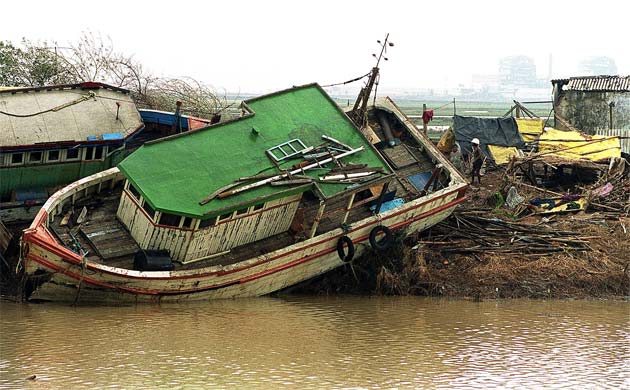Disaster Management In India -A status Report
India has been traditionally vulnerable to natural disasters on account of its unique geo-climatic conditions. Floods, droughts, cyclones, earthquakes and landslides have been a recurrent phenomena.
India has been traditionally vulnerable to natural disasters on account of its unique geo-climatic conditions.Floods, droughts, cyclones, earthquakes and landslides have been a recurrent phenomena. About 60% of the landmass is prone to earthquakes of various intensities; over 40 million hectares is prone to floods; about 8% of the total area is prone to cyclones and 68% of the area is susceptible to drought. In the decade 1990-2000, an average of about 4344 people lost their lives and about 30 million people were affected by disasters every year. The loss in terms of private, community and public assets has been astronomical.
At the global level, there has been considerable concern over natural disasters. Even as substantial scientific and material progress is made, the loss of lives and property due to disasters has not decreased. In fact, the human toll and economic losses have mounted. concerted international action, specially in developing countries.
The super cyclone in Orissa in October, 1999 and the Bhuj earthquake in Gujarat in January, 2001 underscored the need to adopt a multi dimensional endeavour involving diverse scientific, engineering, financial and social processes; the need to adopt multidisciplinary and multi sectoral approach and in corporation of risk reduction in the developmental plans and strategies.
Over the past couple of years, the Government of India have brought about a paradigm shift in the approach to disaster management.The new approach 4 proceeds from the conviction that development cannot be sustainable unless disaster mitigation is built into the development process. of the approach is that mitigation has to be multi-disciplinary spanning across all sectors of development.The new policy also emanates from the belief that investments in mitigation are much more cost effective than expenditure on relief and rehabilitation.
Steps taken by Government
The steps taken by the government stem from the approach outlined above, and the approach has been translated into a National Disaster Framework [Roadmap] covering institutional mechanisms, disaster prevention strategy, early warning system, disaster mitigation, preparedness and response and human resource development. The expected inputs, areas of intervention and agencies that will be involved at the national, state and district levels have been identified and included in the roadmap. This roadmap has been shared with all state governments and union territory administrations. India and the State Governments/UT Departments have been advised to develop their own roadmaps taking the National Roadmap as a broad guiding principle, thus, there is now a common strategy that supports the actions being taken by all the participating organizations/stakeholders.


Comments
Post a Comment